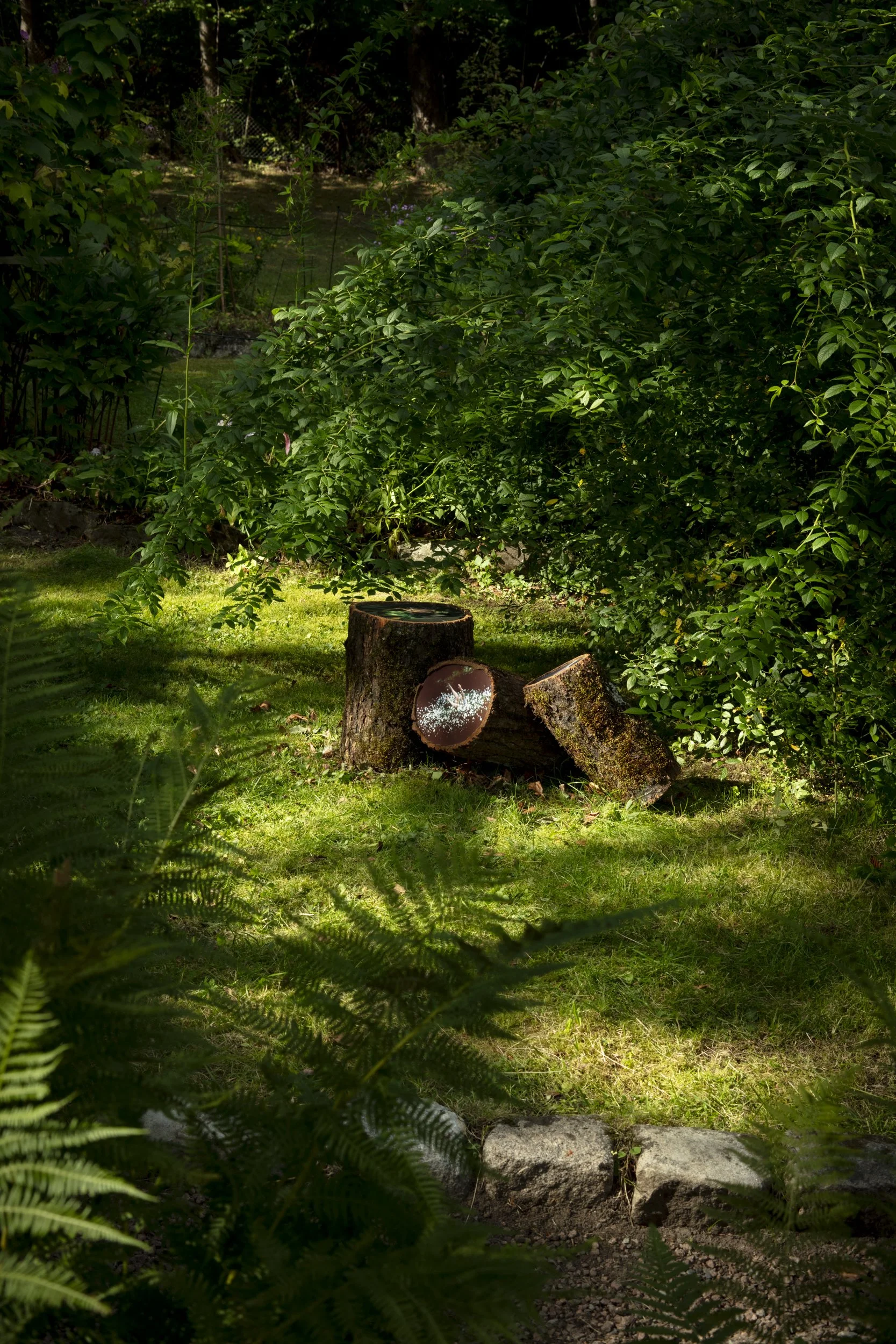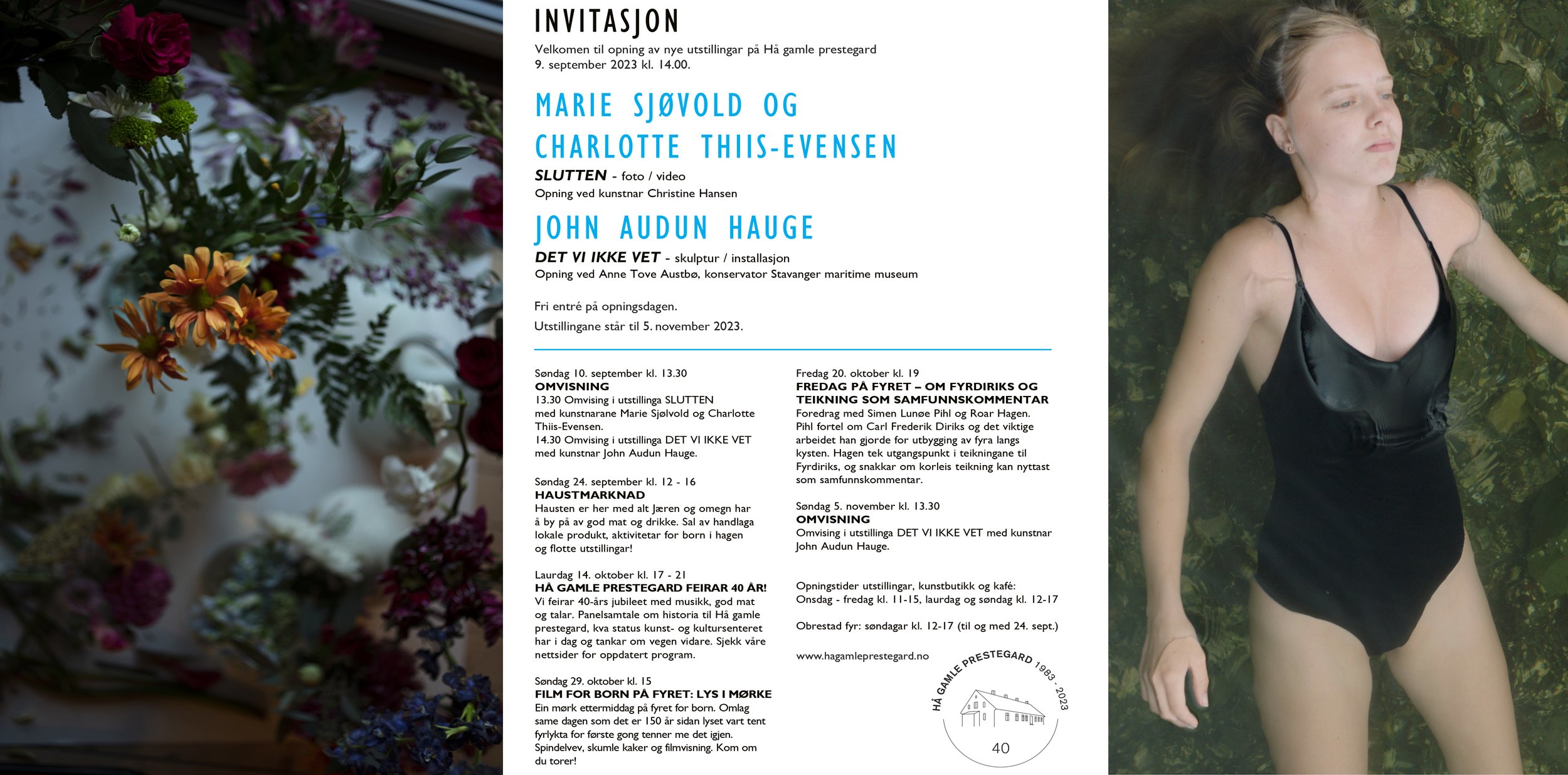IN ENGLISH:
REVIEW by Mona Pahle Bjerke, Art critic, NRK.NO
Published 1 June
The Unbearable Silence
An important reminder to take breaks from the noise of social media
«Hvor mye stillhet tåler du?»
by Marie Sjøvold
Gyldenpris Kunsthall, Bergen
25 May – 10 June
My childhood in the 1980s consisted of hours we had to fill by ourselves – with games, books and ideas.
Today it’s not just children who drown out every vacant moment with digital impressions and impulses.
Neither can adults sit on the bus, stand in the lift, or in a queue and just think a bit. We must always pull out our phone and check the news, an e-mail, an app or something else.
It’s like a disease of our time.
We no longer have any tolerance for silence or boredom.
In the summer of 2018 the artist Marie Sjøvold made a radical move.
She logged off all social platforms, media and apps and acquired an old mobile phone with buttons. With it she could make calls and send messages. She could also check her e-mail on the computer.
But apart from this she decided to disconnect herself from the digital world for an entire year.
Every time she reached for her phone out of habit she took a photo instead.
From the overwhelming material she created throughout she has now carefully selected pictures for a series that is shown through a book and as an exhibition.
A picture of unmoving time
Marie Sjøvold’s photos look good in the open, bright and quite worn down art hall.
The exhibition is only lit by natural daylight which works splendidly with the pictures wherein light also plays a central part.
A photo that really captures the impression of unmoving time depicts a darkened bedroom with a rectangular window. The damp, pale daylight seeps through the dew which blocks the view.
The fact that we can’t look out creates a claustrophobic feeling.
Maybe this inability to look out reflects the loss of the digital ability to look in: the social media window into people’s private spheres which has been abruptly closed.
My guess is that at first it gives a feeling of loss, followed by a deep feeling of relief.
Attentive presence
The photos are characterized by attentive presence, a meditative interest in the everyday moment.
In our social media existence we take pictures all the time.
We hunt for the spectacular and the photogenic.
Sjøvold attempts to stop and think about the things that aren’t so remarkable at first glance, the little experiences that are in danger of drowning in all the media noise that surrounds us.
It can be something as simple as a lock of hair falling down across the shoulders of a child, or the golden evening light painting its picture on the wall.
I feel that Marie Sjøvold is a kind of painter who paints with light in her photos.
I like her quiet, poetic pictures and the interesting and precariously relevant concept. We need this reminder that silence needs a place in reality.
If you don’t want to do like Sjøvold, to disconnect for a whole year, then you can see how nice it is to actually try it for a little while.
Put away your phone, turn off your PC and pull the plugs out of year ears and just be present. Listen to and look at what is around you here and now.
A good start of a project like that is to go to Gyldenpris in Bergen and see Marie Sjøvold’s exhibition.









































































































